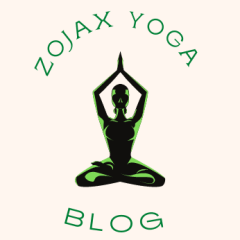The Extended Side Angle pose, also known as Utthita Parsvakonasana, is a powerful yoga posture that offers numerous benefits to practitioners. In this article, we will explore the various aspects of this pose, including its significance, targeted areas, step-by-step instructions, modifications, common mistakes, benefits, precautions, and how to incorporate it into your yoga workouts.
Understanding the Extended Side Angle Pose The Extended Side Angle pose is often referred to as Warrior Angle or Virabhadra Konasana. This dynamic asana primarily targets the legs, hips, and side body, while also engaging the core muscles. Despite its challenging appearance, this pose is suitable for beginners as well, with modifications available to accommodate varying levels of flexibility.
I. Step-by-Step Instructions for Utthita Parsvakonasana
To begin practicing Utthita Parsvakonasana, start from Mountain Pose (Tadasana) and follow these steps:

Image by yanalya on Freepik
To optimize the pose:
II. Variations and Modifications For individuals with limited flexibility or specific concerns, here are some modifications and prop usages to enhance the pose:
Certainly! The Extended Side Angle Pose, or Utthita Parsvakonasana, is a yoga pose that involves stretching and strengthening various parts of the body. For individuals with limited flexibility or specific concerns, here are some variations and modifications, along with prop usages, to enhance and adapt the pose:

Image by yanalya on Freepik
1. **Use of a Yoga Block:**
– Place a yoga block under your bottom hand for added support. This helps to bring the ground closer and provides stability.
– Adjust the height of the block based on your comfort and flexibility.
2. **Reduced Depth:**
– Instead of going into a deep lunge, shorten the stance by bringing the front foot closer to the body. This reduces strain on the hips and knees.
– Focus on maintaining proper alignment rather than going for an extreme stretch.
3. **Back Heel Lifted:**
– Lift the back heel off the mat, allowing for a more comfortable stance, especially if you have tight calves or Achilles tendons.
– This modification also eases pressure on the back knee.
4. **Micro-bend in the Front Knee:**
– Avoid locking the front knee. Keep a slight bend to prevent hyperextension and protect the joint.
– This helps to engage the muscles without putting unnecessary stress on the knee.
5. **Wall Support:**
– Practice the pose with your back against a wall for added stability.
– This modification is beneficial for those who struggle with balance or have concerns about falling.
6. **Chair Variation:**
– Hold onto the back of a chair for balance and support. This is particularly helpful for individuals with stability issues.
– The chair allows you to focus on the upper body stretch without worrying about balance.
7. **Props for Arm Position:**
– Use a yoga strap to connect your hands if reaching the floor is challenging. This helps maintain proper alignment and allows for a comfortable stretch.
– If the top arm feels heavy or strained, rest it on the top hip or use a block for support.
8. **Seated Variation:**
– If standing is difficult, you can perform a seated variation of the pose. Sit on the edge of a chair, extend one leg to the side, and reach towards the extended foot.
Always listen to your body and modify the pose according to your comfort level and any specific concerns or limitations you may have. It’s important to focus on the alignment and engagement of muscles rather than pushing into a position that causes discomfort or pain. If you have any pre-existing conditions or injuries, consult with a yoga instructor or healthcare professional for personalized guidance.
III. Common Mistakes and How to Avoid Them Avoid these common mistakes to ensure a safe and effective practice:
- Collapsing the front knee inward: This can strain the knee joint. Instead, keep the knee aligned with the ankle.
- Allowing the shoulders to round or hunching forward: Maintain an open chest and lift the weight off your shoulders.
- Overextending the front knee beyond the ankle: Aim to keep the front shin vertical to protect the knee.
To correct and avoid these mistakes:
- Engage your leg muscles to maintain stability and proper alignment.
- Visualize lengthening your spine and keeping your shoulders relaxed and away from your ears.
IV. Benefits of Extended Side Angle Pose The Extended Side Angle pose offers a multitude of benefits:
- Strengthens the legs and improves stability and balance.
- Increases hip flexibility and opens the hips.
- Provides a deep stretch along the side body, promoting better posture and spinal alignment.
- Opens the chest, allowing for increased lung capacity and improved breathing.
- Relieves tension and stiffness in the shoulders and back.
V. Precautions and Safety Considerations While Utthita Parsvakonasana is generally safe, there are a few precautions to keep in mind:
- Avoid practicing this pose if you have hip, knee, neck, or shoulder injuries.
- Individuals with high or low blood pressure should consult their healthcare professional before attempting this pose.
- Always listen to your body and modify or skip the pose if
- you experience any pain or discomfort.
- If you have a headache, it is advisable to avoid practicing this pose.
- Do not perform Utthita Parsvakonasana if you have any existing medical conditions without consulting a qualified yoga instructor or healthcare professional. • Remember to warm up properly before attempting the pose to prevent strain or injury.
- Keep in mind that everyone’s body is different, so it’s important to respect your own limits and not push yourself beyond what feels comfortable.
- If you are unsure about whether you should practice the pose, it’s always best to seek guidance from a certified yoga instructor or healthcare provider.
- Incorporating Extended Side Angle Pose into Workouts
- Once you have familiarized yourself with the Extended Side Angle pose, you can incorporate it into your yoga workouts to enhance your practice. Here are a few popular workout sequences where the pose can be included:
Standing Pose Sequence:
- Begin with Mountain Pose (Tadasana) and transition into Extended Side Angle Pose.
- Follow it with other standing poses such as Warrior II (Virabhadrasana II) and Triangle Pose (Trikonasana) to create a flowing sequence.
- Repeat the sequence on both sides to maintain balance.
- Extended Side Angle Pose Variation Sequence:
- Start with Extended Side Angle Pose on one side.
- Transition into other variations of the pose, such as the half bind or full bind.
- Flow through these variations, focusing on maintaining proper alignment and engaging the core.
- Repeat the sequence on the opposite side to ensure symmetry in your practice.
- Remember to listen to your body and modify the poses or sequences as needed. It’s essential to honor your body’s limitations and avoid pushing yourself too far, especially if you’re a beginner or dealing with any physical restrictions.
- For more yoga sequences and pose libraries, you can explore reputable yoga resources, websites, or consult a qualified yoga instructor who can guide you further in your practice.
Conclusion
In conclusion, mastering the Extended Side Angle pose (Utthita Parsvakonasana) can be a transformative experience for your yoga practice. By understanding the pose’s techniques, benefits, and variations, you can deepen your physical strength, flexibility, and mental focus. Remember to approach the pose mindfully, respecting your body’s limitations and seeking professional guidance when needed.
FAQ Page about Extended Side Angle (Utthita Parsvakonasana)
What is Extended Side Angle (Utthita Parsvakonasana)?
Extended Side Angle, also known as Utthita Parsvakonasana, is a yoga pose that is part of a standing sequence in vinyasa flow classes. It involves a deep stretch and strengthening of the legs, hips, and hamstrings while opening the chest and shoulders.
What are the benefits of practicing Extended Side Angle pose?
Extended Side Angle pose offers numerous physical and mental benefits. Some of the key advantages include: Strengthening and stretching the legs, hips, and hamstrings, opening the chest and shoulders. Relieving stiffness in these areas. Providing a deep side body stretch, increasing flexibility and mobility. Improving balance, concentration, and focus. Engaging the core muscles for stability and strength.




